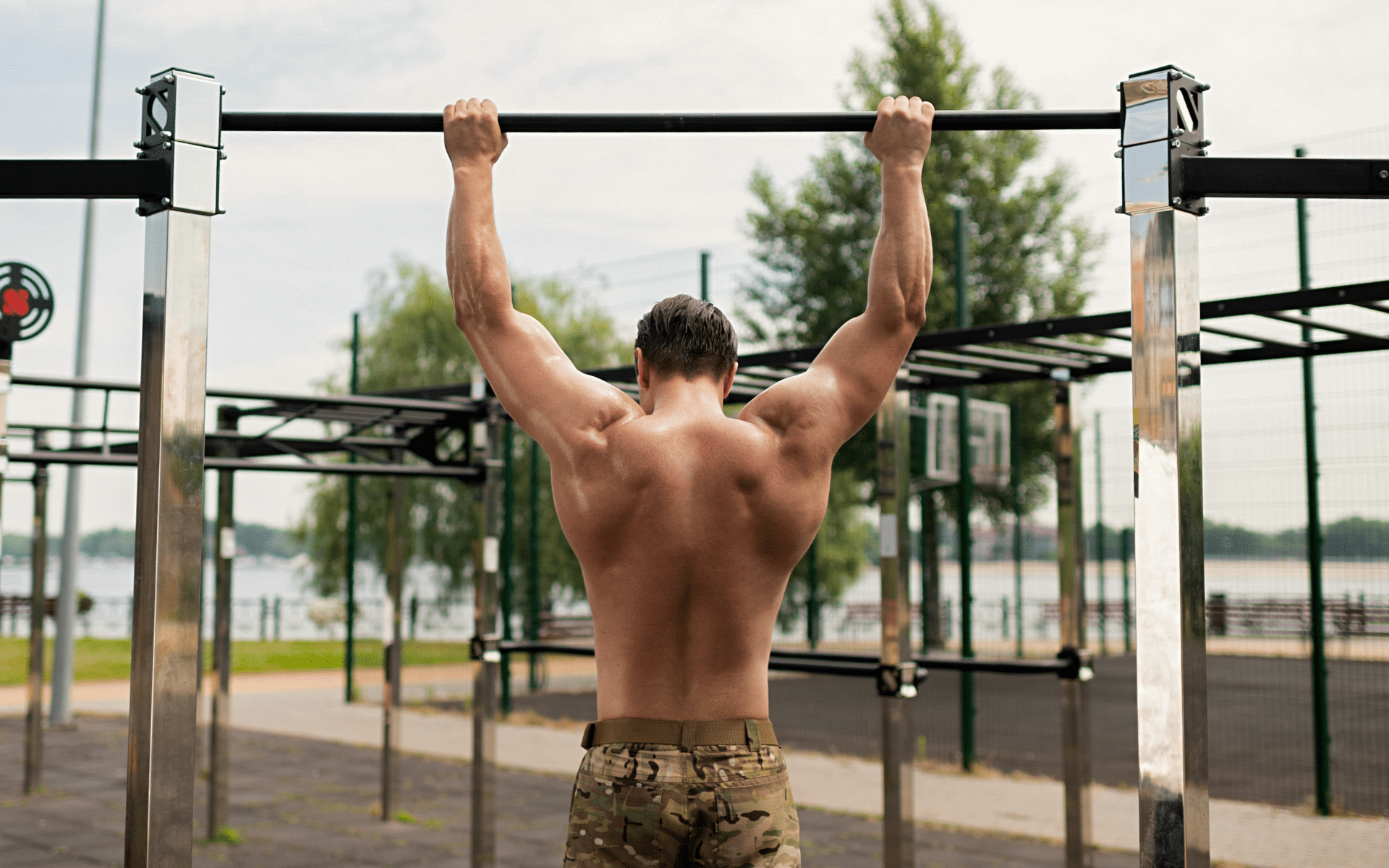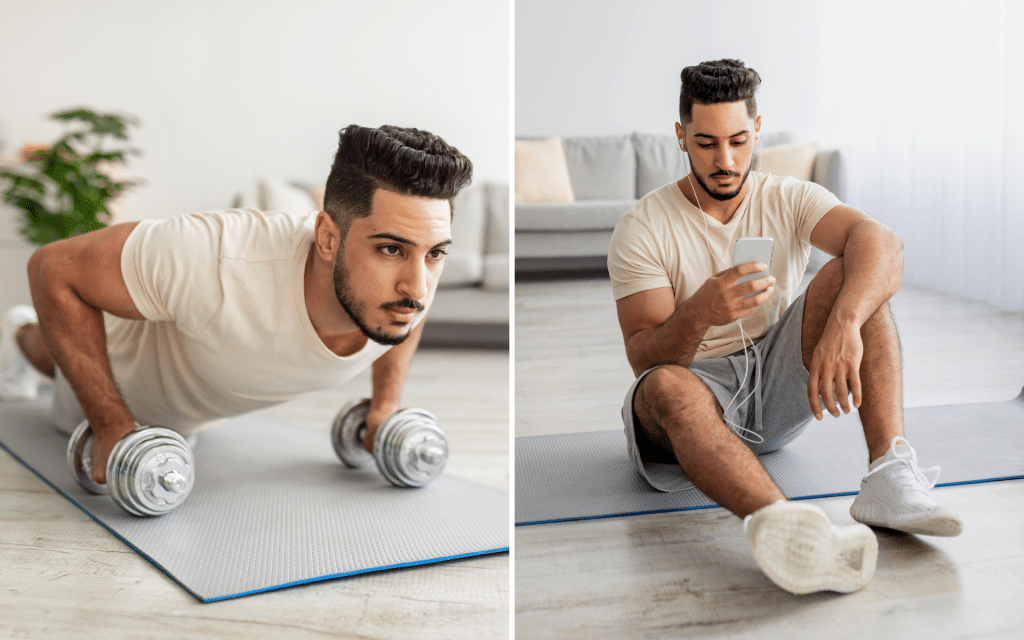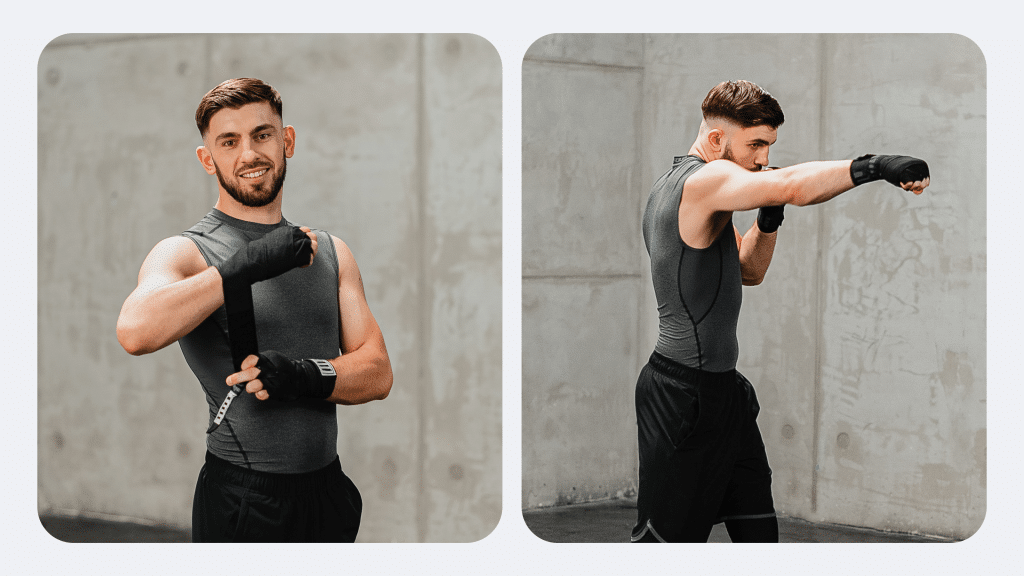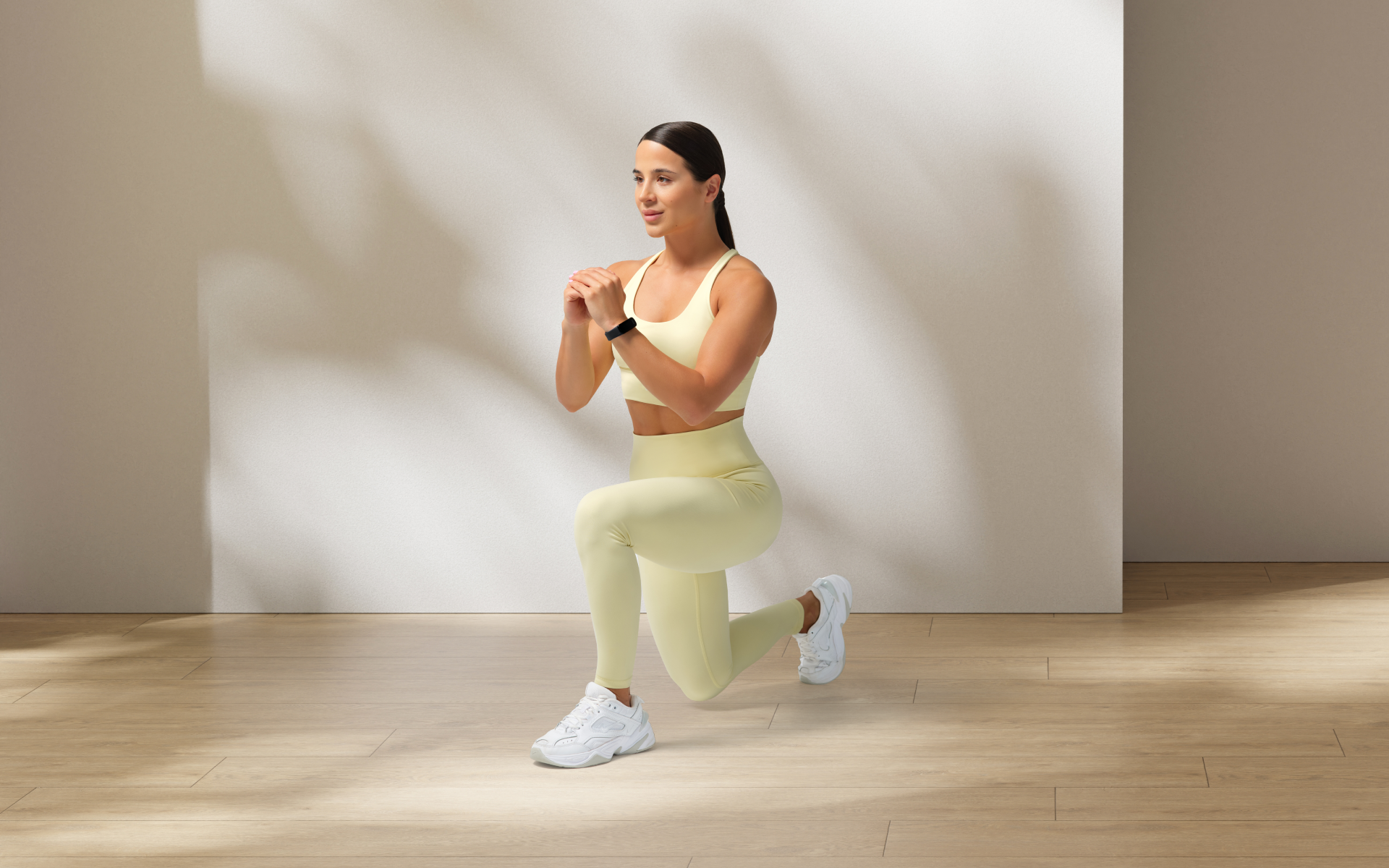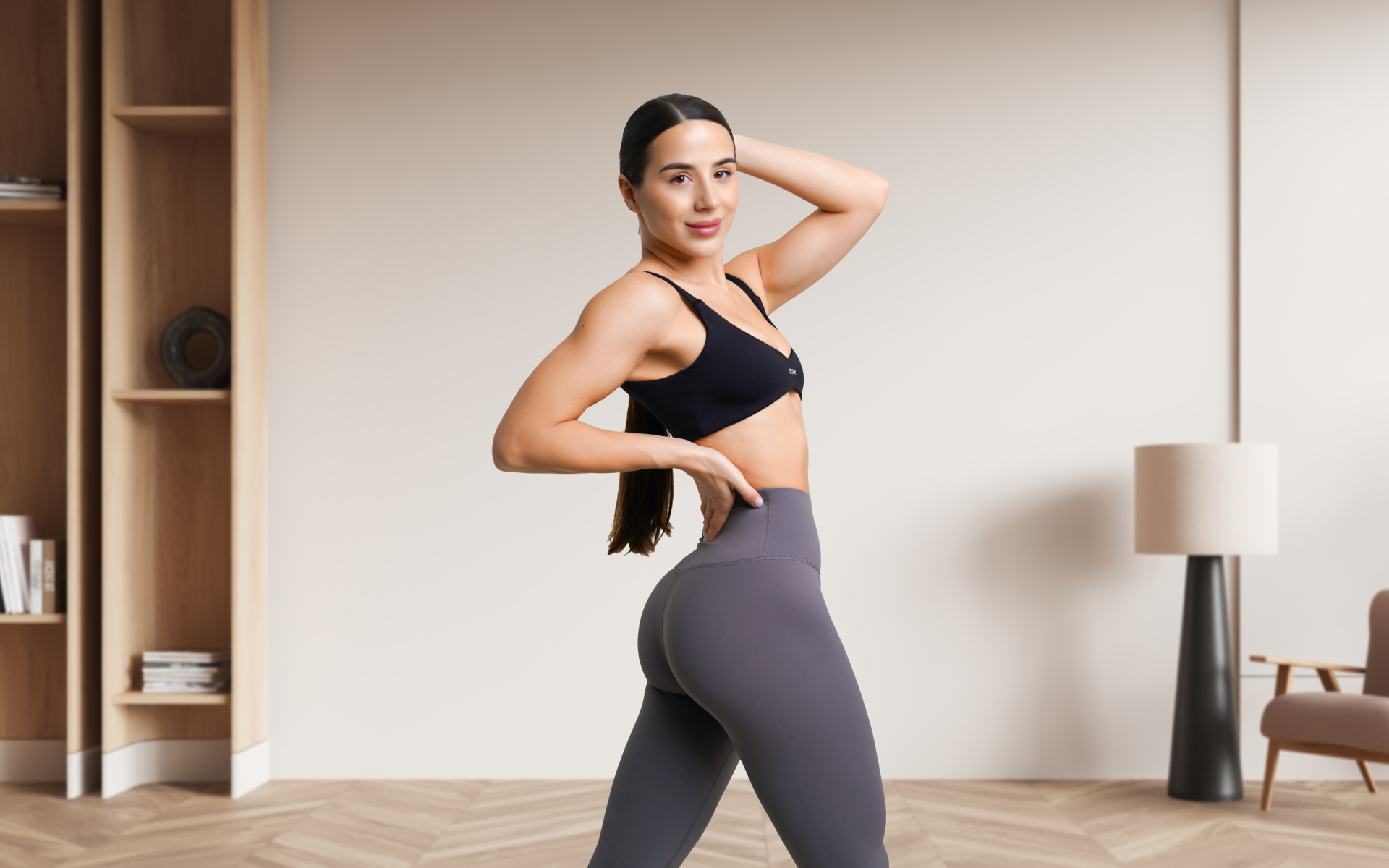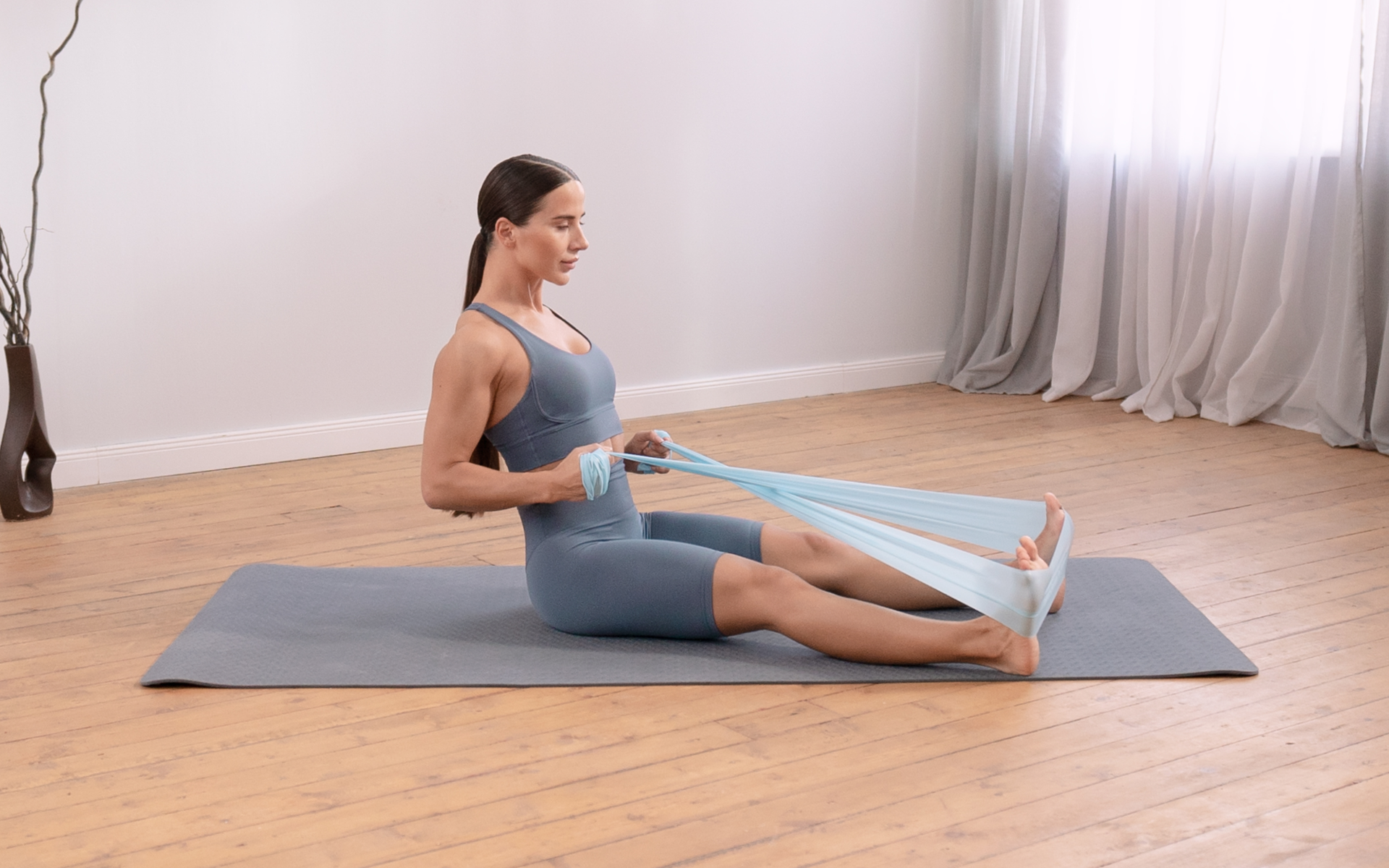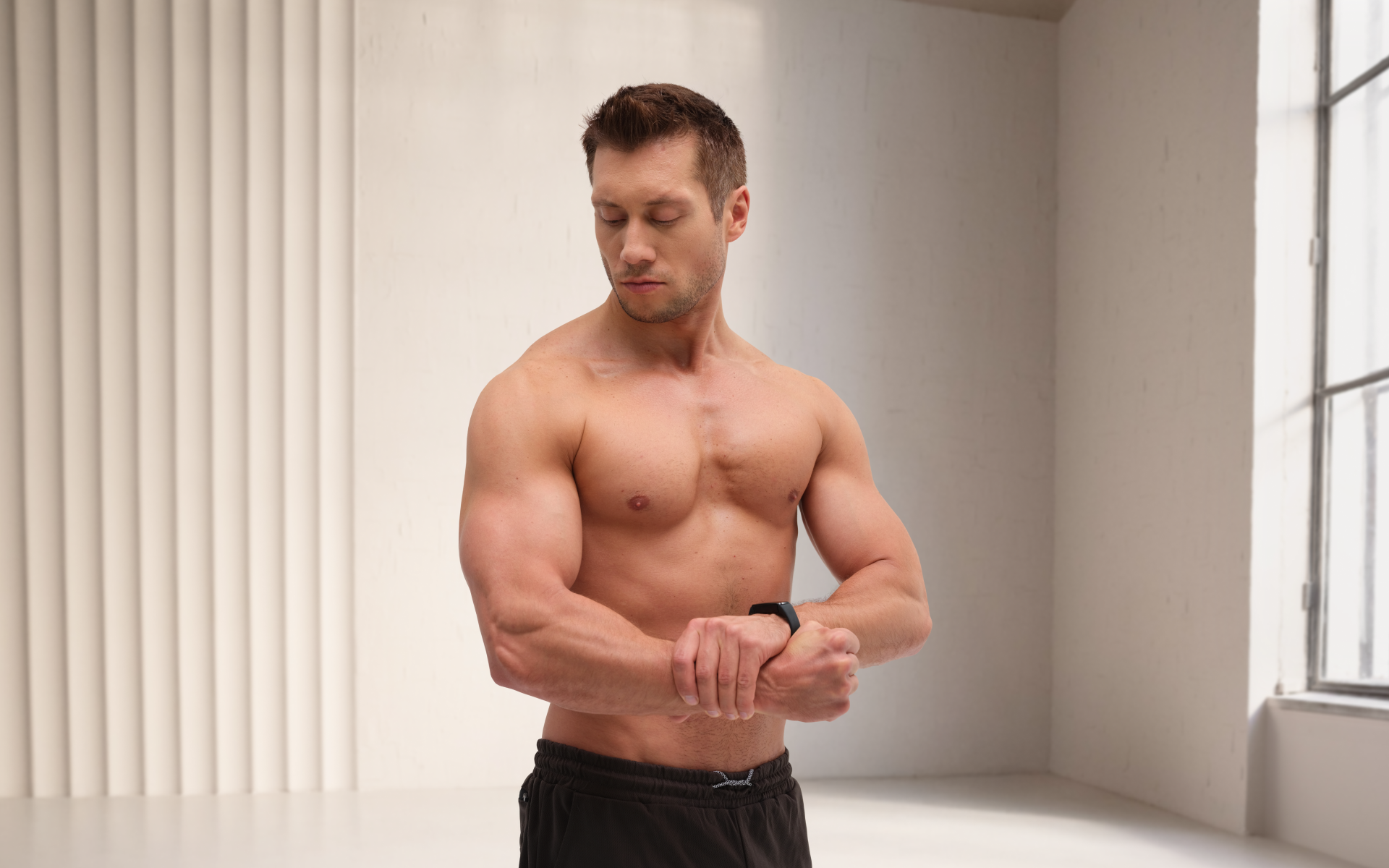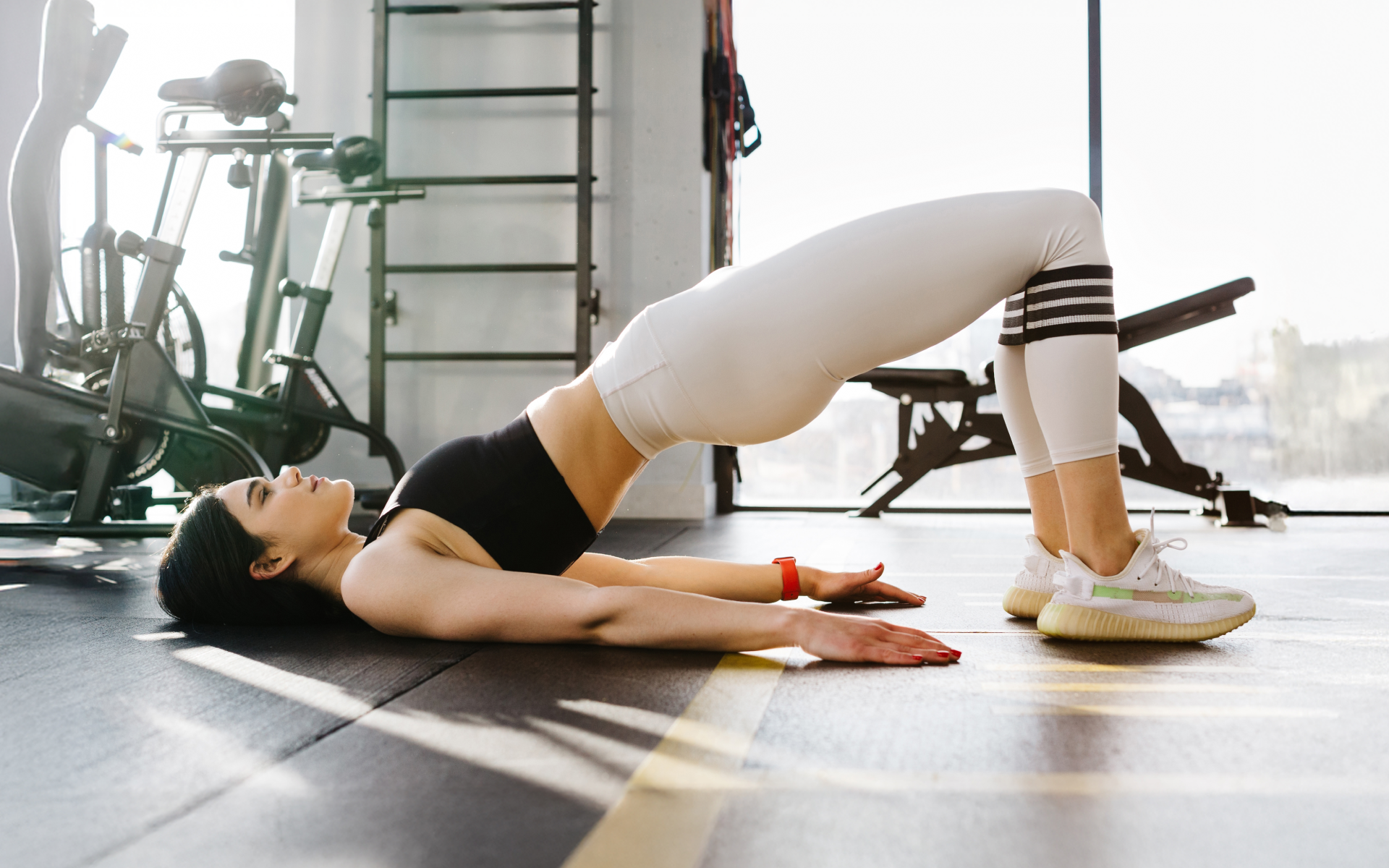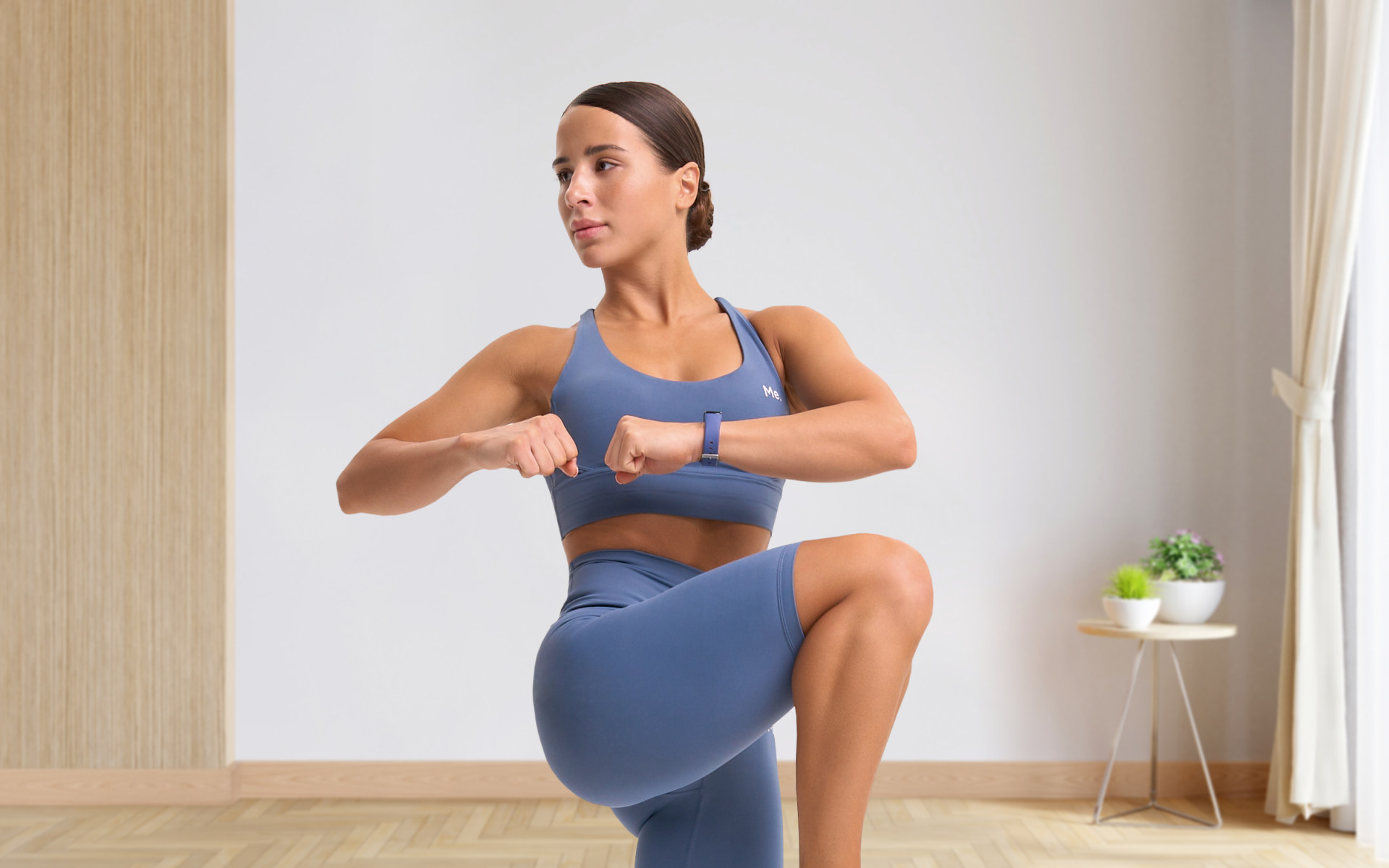If you pay attention to most bodybuilder’s physiques, you may realize that most well-known competitors have sculpted V-shaped bodies.
Experts characterize the V-shaped body with:
- Broad shoulders
- A wide back
- A narrow waist
This body shape is a hallmark of fitness and bodybuilding aesthetics.
The desirable v-shape is visually striking and represents a well-balanced and disciplined approach to fitness.
Our guide outlines the scientific, dietary, and exercise strategies necessary to achieve this physique.
Can Everyone Get The V-Shape Body?
While anyone can strive for a V-shaped body, genetics significantly determine the degree to which you can achieve it.
Bone structure, such as shoulder width and back proportions, sets a foundational limit.
Those with naturally broader shoulders and narrower waists have a genetic advantage.
However, anyone can enhance their natural shape through targeted exercise and proper nutrition.
It’s essential to have reasonable expectations. The V-shape might be less pronounced if you have a narrower skeletal structure.
Before beginning, consider your genetic predisposition by observing your family’s physical traits, particularly their shoulder and back width. This knowledge can help set realistic and achievable goals.
How Do I Know If I Have V-Shape Body?
The proportions of this body shape are in the name, or more specifically, in the shape of the letter ‘V.’ People with this body type have large, broad shoulders, a wide back, and a narrow waistline and hips.
How Do You Get A V-Shape Body?
It’s common for most men to want this physique, and you might be one of them!
Here are some tips that can help you achieve this goal.
- Start With Your Diet
Genetic skeletal structure aside, increased muscle mass can create a V-shaped body. Growing muscle requires focusing on your diet (same for weight and fat loss), starting in the kitchen and not at the gym.
To grow more muscle you need to:
Eat On A Caloric Surplus
To build muscle, consume 10–20% more calories than your maintenance level.
This process, known as bulking, provides the energy needed for heavy lifting and muscle hypertrophy (2).
If you have excess abdominal fat, you should prioritize losing it by maintaining a caloric deficit of 500–750 daily calories to reduce your waist circumference (3).
Maintaining a caloric deficit and strength training is how to get V-shape abs or a toned stomach.
Eat A High Protein Diet
Protein is the building block of muscle.
You need to have a high protein intake for muscle building.
Aim for 1.2–1.6 grams of protein per kilogram of body weight daily (4, 5).
The best sources of this macronutrient include:
- Lean animal protein
- Plant protein from legumes and lentils
- Supplements like protein powders (whey or plant-based – to up your protein intake without overeating).
BetterMe: Health Coaching app helps you achieve your body goals with ease and efficiency by helping to choose proper meal plans and effective workouts. Start using our app and you will see good results in a short time.
-
Do The Right Exercises
The essence of the V-shape lies in well-developed shoulders and back muscles.
Prioritize exercises that target these areas:
Lat Pulldown:
Lat pulldowns are a cornerstone exercise for developing a broad back, which is crucial for the V-shaped look. This exercise primarily targets the latissimus dorsi, the most significant muscle in your back responsible for creating width and strength.
Additional muscles worked include:
- Trapezius: Stabilizes and supports the shoulders and upper back.
- Rhomboids: Connect the shoulder blades to the spine, improving scapular control and back width.
- Teres Major: This muscle is on the back of the shoulder blade and enhances upper arm and back definition.
- Pectoralis Major: Provides support during the movement, contributing to overall upper-body strength.
Key variations to consider:
- Wide-Grip Pulldown: Enhances lat width and overall back development.
- Straight-Arm Pulldown: Isolates the lats for targeted engagement.
- Underhand Pulldown: Activates the biceps and enhances back strength through a varied grip.
Deadlifts
Though many people consider deadlifts a lower-body exercise, they are one of the most functional full-body exercises and are indispensable for back development.
The movement engages the latissimus dorsi and strengthens the traps and spinal erectors, contributing significantly to the V-shaped aesthetic.
Popular variations include:
- Conventional Deadlift: A full-body powerhouse for strength and hypertrophy.
- Snatch-Grip Deadlift: Incorporates a wider grip, emphasizing the lats and upper back more.
Wide Grip Pull Ups
Wide-grip pull-ups are a bodyweight exercise that directly targets the lats, traps, and biceps, making them ideal for sculpting a V-shaped physique.
The wider grip accentuates back muscle activation, offering better gains than standard pull-ups.
Doing wide-grip pull-ups is how to get V-shape body without weights, as you can perform the exercise with minimal tools.
Knowing how to get v-shape body calisthenics transformations without weight or gym machinery is entirely possible.
Rowing Exercises
These rowing exercises include:
- Bent-over row
- Wide grip row
- T-bar row
- And more.
Like all the other workouts mentioned above, rowing exercises are fantastic for targeting your lats and various back, arm, and posterior shoulder muscles.
Lateral Raises
Lateral raises are an excellent exercise for broadening the shoulders.
They primarily target the deltoid muscles, particularly the lateral head, which is key for creating width. The trapezius also plays a secondary role in stabilizing the movement, enhancing the upper-back definition.
This exercise is ideal for how to get V-shape body with dumbbells, as it is versatile and convenient.
If you’re wondering how to get V-shape body at home or in the gym, these lateral moves should be part of your workout routine.
-
Rest
You must always be cautious of overtraining (6).
Overtraining can hinder muscle growth and lead to injuries.
Avoid targeting upper-body muscles more than twice a week to allow sufficient recovery time.
To maximize results, prioritize rest days, proper sleep, and nutrition.
Check out this article to learn more about the benefits of Pilates for men.
-
Keep Your Exercises Balanced
While building a V-shaped upper body is the primary goal, neglecting lower-body exercises creates an unbalanced and disproportionate appearance.
To develop the legs and lower-body muscles, incorporate compound movements such as:
- Squats
- Lunges
- Calf raises
- Glute bridges
A well-rounded physique enhances aesthetics and improves overall strength and stability, ensuring the lower body can be a solid foundation for the upper body.
Balancing your workouts will create a harmonious, proportional look that complements the V-shaped upper body.
Read more: V-Shaped Body Training Plan To Build Strength And Proportion
How Long Does It Take To Get V-Shape?
The time required to develop a V-shaped physique varies significantly from person to person and depends on several factors, including:
- Genetics
- Consistency
- Starting point
- Training intensity
For some, genetic limitations may make achieving a pronounced V-shape impossible.
However, these genetic limitations don’t diminish the value of working toward personal fitness goals.
Your genetics determine your skeletal structure, which significantly affects how pronounced your V-shaped physique can become.
You may achieve this aesthetic more quickly if you have naturally broad shoulders, a wide back, and a narrow waist.
Conversely, if you have a narrower frame or less prominent bone structure, your results may be less dramatic, even with dedicated effort.
It’s important to remember that genetics set the stage for what is physically achievable but do not limit one’s ability to improve overall strength and appearance.
Read more: The Ultimate 30-Day Muscle Gain Plan for Beginners
How Do You Get V-Shape Fast?
Several factors contribute to how long it may take to develop a V-shaped physique:
- Starting Point: Beginners with minimal muscle mass will likely require more time to build their back and shoulder muscles, while those already closer to the physique they wish to have will have a good chance of getting there faster.
- Consistency: Regular exercise and a disciplined diet are critical for progress. Inconsistent efforts will delay results.
- Training Intensity And Program Design: Following a well-structured workout routine that targets the shoulders, back, and core will yield faster results than a less focused approach.
- Body Fat Levels: Reducing body fat to highlight muscle definition is key to achieving a V-shaped appearance. Depending on your body fat percentage, this can take time.
On average, noticeable muscle growth may begin to show after 6–8 weeks for beginners, while more experienced lifters will see varying timeframes for changes in muscle mass depending on their training program, diet, and how close they are to their genetic limit. For many, achieving a fully defined V-shape can take months or even years of dedicated effort.
While many admire the V-shaped physique, it is not the most vital goal in fitness.
Improving your overall health, strength, and confidence should take priority.
A balanced approach to fitness—focusing on cardiovascular health, functional strength, and mental well-being—offers long-term benefits beyond physical appearance.
Whether you’re a workout beast or just a beginner making your first foray into the world of fitness and dieting – BetterMe has a lot to offer to both newbies and experts! Install the app and experience the versatility first-hand!
Do not be discouraged if a V-shaped physique proves difficult or unattainable due to genetic factors. Every individual’s fitness journey is unique, and achieving personal milestones is far more meaningful than meeting a narrow aesthetic standard.
Ultimately, the goal is to feel strong, healthy, and confident in your body, regardless of its shape.
Check out this article to learn more about male 3 month body transformation.
As mentioned above, the V-shape body results from genetics (bone structure), diet, and exercise. That is entirely subjective, but many people consider this body shape attractive. There is no ideal body shape/standard. Everyone has a different definition of what is attractive. As previously mentioned, genetics affect how pronounced a V-shaped body can be. If you have broader shoulders and back, plus slimmer hips, a V-shape is easier to achieve than for someone with narrower shoulders and back, with wider hips.Frequently Asked Questions
What causes v-shaped body?
Is v-shape body attractive?
What is the nicest body shape?
Is v-shape genetic?
The Bottom Line
When getting a V-shaped body, remember that while exercise and diet contribute to your success story, your genetics play a much more significant role than many people like to admit.
Do not be discouraged if you are unable to achieve this goal. As long as you are fit and healthy, that’s all that matters.
DISCLAIMER:
This article is intended for general informational purposes only and does not serve to address individual circumstances. It is not a substitute for professional advice or help and should not be relied on for making any kind of decision-making. Any action taken as a direct or indirect result of the information in this article is entirely at your own risk and is your sole responsibility.
BetterMe, its content staff, and its medical advisors accept no responsibility for inaccuracies, errors, misstatements, inconsistencies, or omissions and specifically disclaim any liability, loss or risk, personal, professional or otherwise, which may be incurred as a consequence, directly or indirectly, of the use and/or application of any content.
You should always seek the advice of your physician or other qualified health provider with any questions you may have regarding a medical condition or your specific situation. Never disregard professional medical advice or delay seeking it because of BetterMe content. If you suspect or think you may have a medical emergency, call your doctor.
SOURCES:
- Nutrition Recommendations for Bodybuilders in the Off-Season: A Narrative Review (2020, pmc.ncbi.nlm.nih.gov)
- Optimal Diet Strategies for Weight Loss and Weight Loss Maintenance (2020, pmc.ncbi.nlm.nih.gov)
- Synergistic Effect of Increased Total Protein Intake and Strength Training on Muscle Strength: A Dose-Response Meta-analysis of Randomized Controlled Trials (2022, sportsmedicine-open.springeropen.com)
- Systematic review and meta-analysis of protein intake to support muscle mass and function in healthy adults (2023, onlinelibrary.wiley.com)
- Overtraining Syndrome (2012, pmc.ncbi.nlm.nih.gov)
